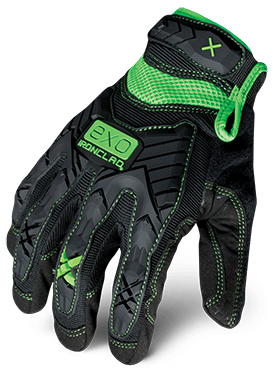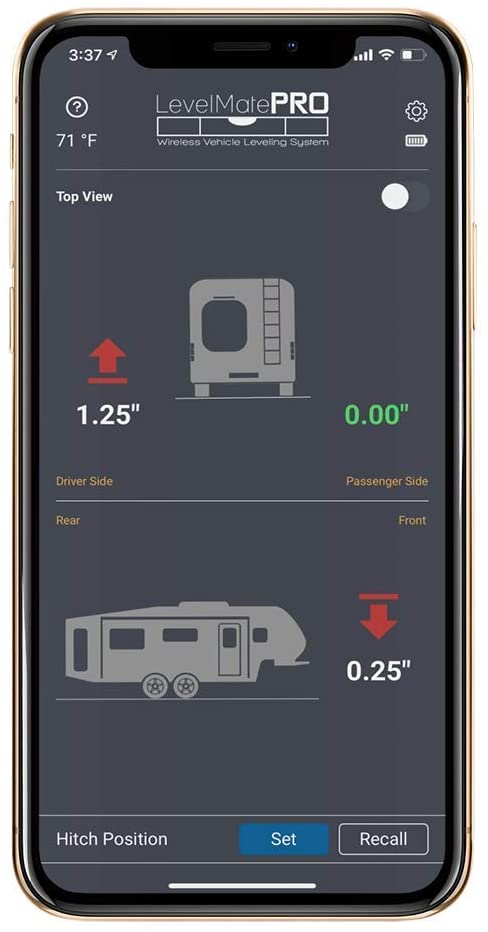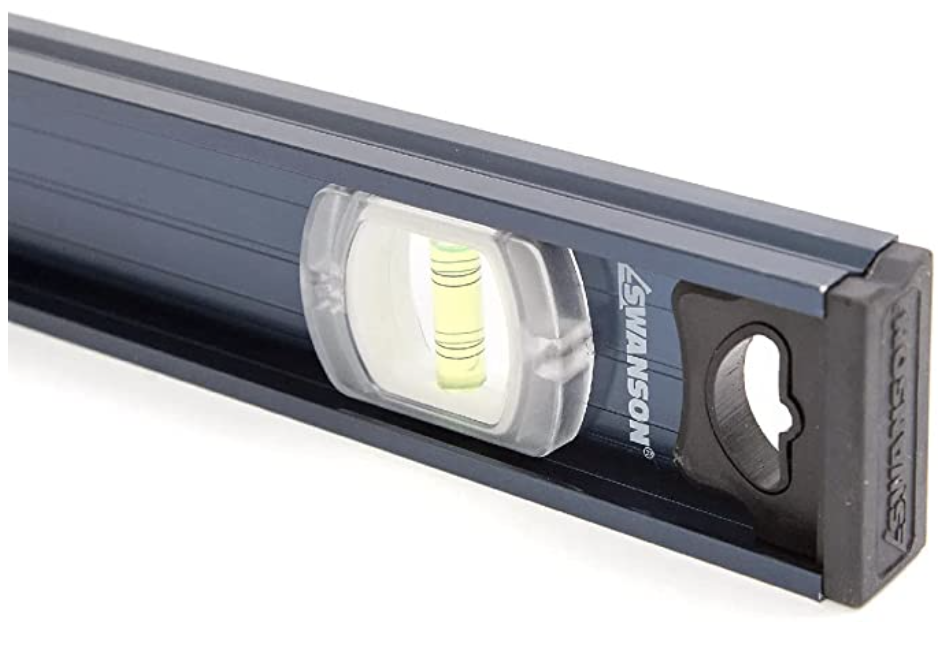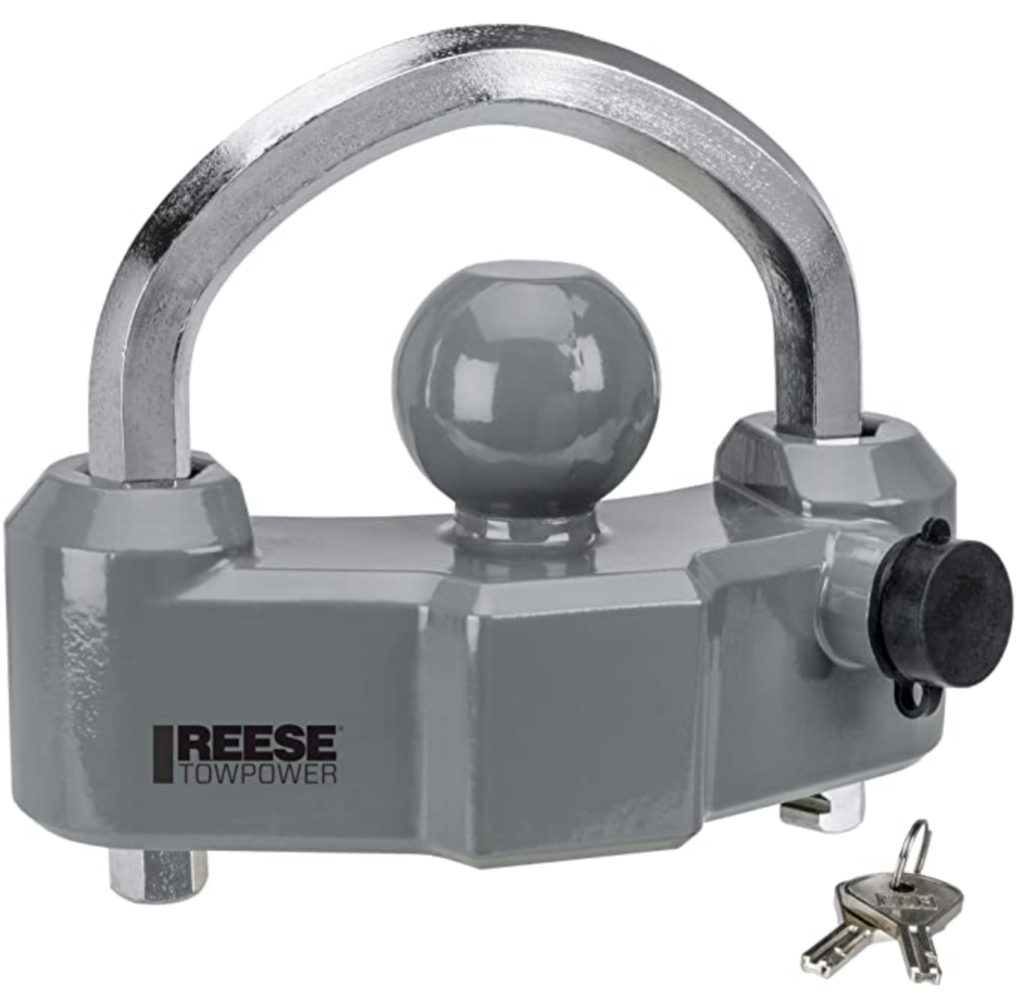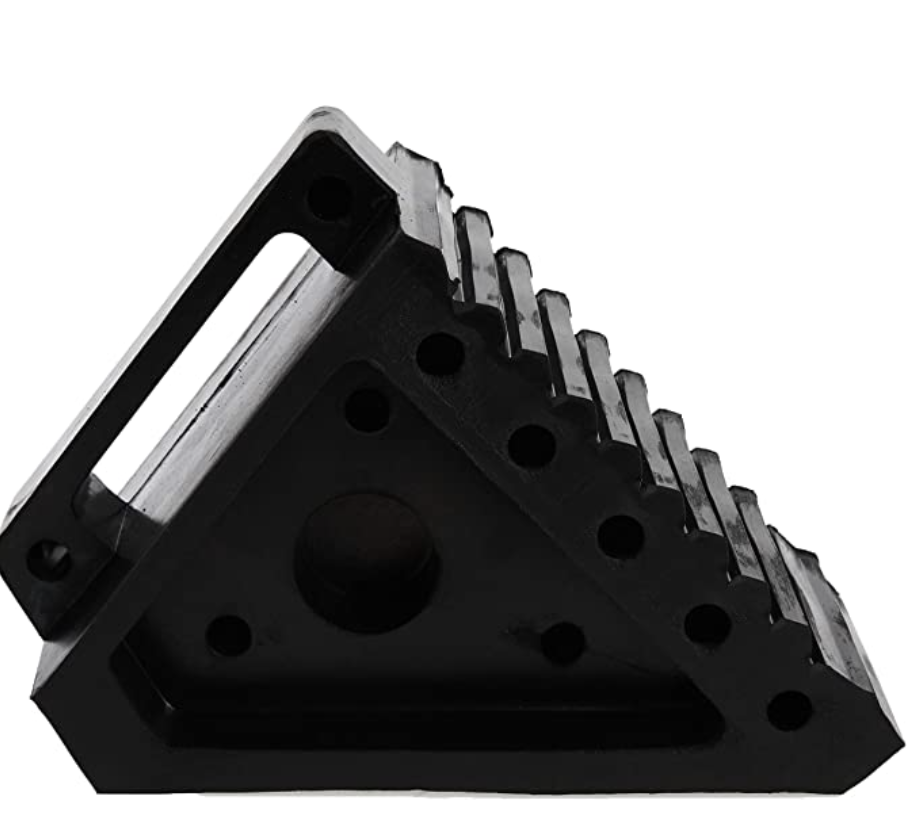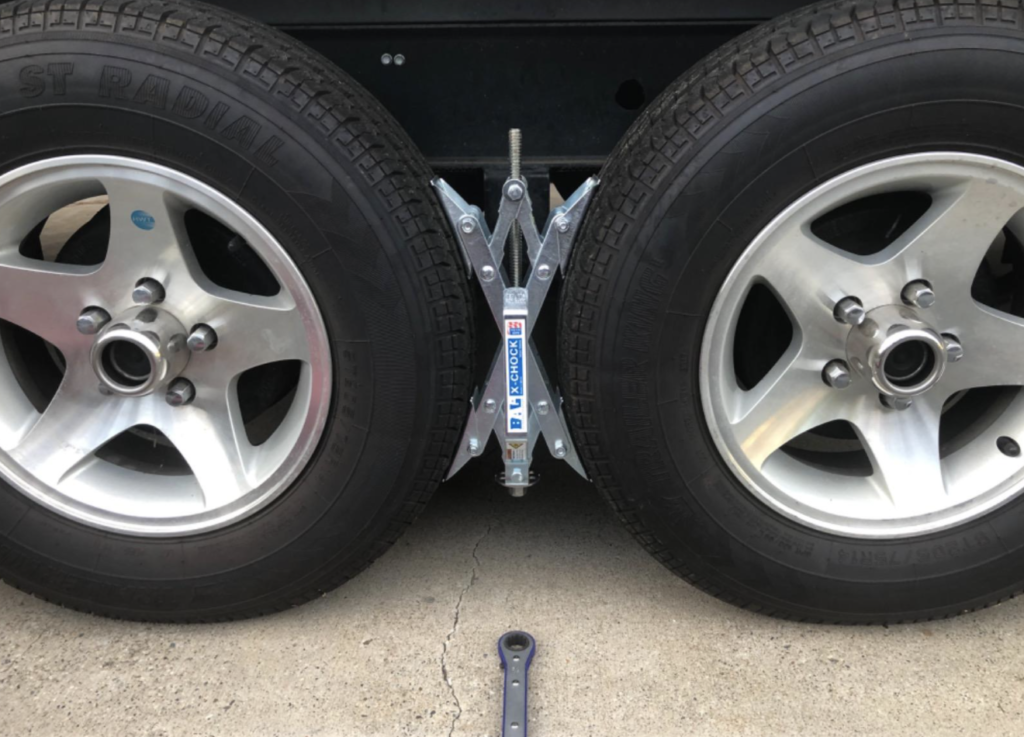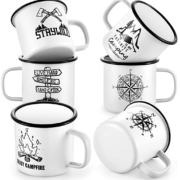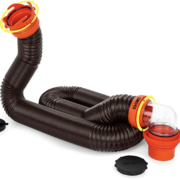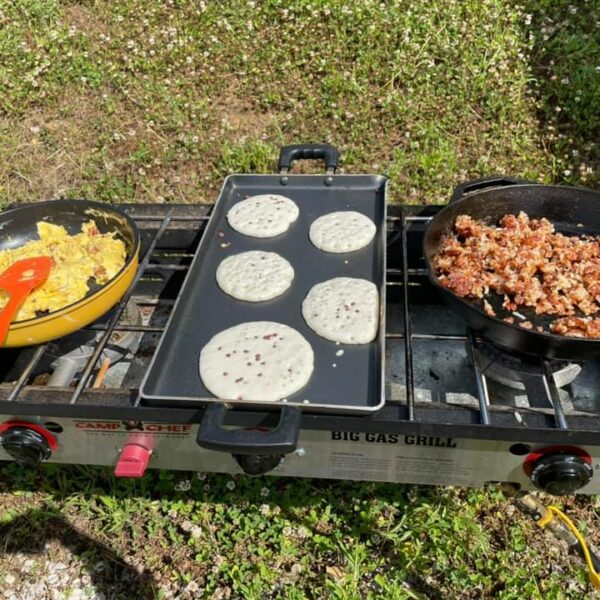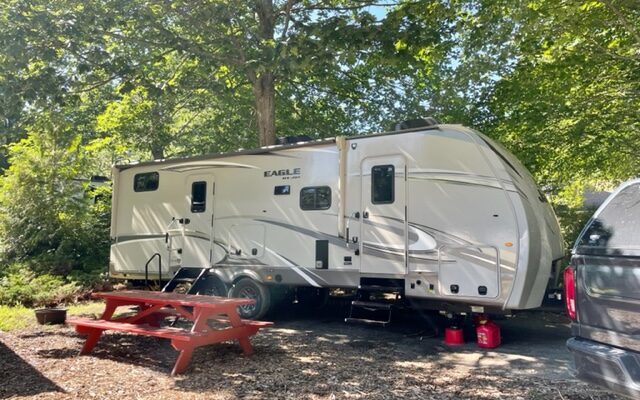

Setting up camp and tearing down camp will become easier with experience. Until then, using a checklist, having designated roles, and having the necessary parts and tools will help things go more smoothly. There’s a common saying that’s printed on everything from shirts, mugs, and pillows: “Sorry for what I said while we were trying to park the camper”, but if you have the right tools and approach, parking and setting up can be much easier. Unfortunately, there’s always someone watching you pull in your site, which definitely increases anxiety. This article contains affiliate links.
Get a good pair of work gloves. They will protect your hands during water, electric, and hitch hookups/setup and give you extra grip for certain tasks. I recommend everyone in the family have a pair of gloves so they can jump in and help.
Level Mate Pro creates a huge advantage to finding the most level part of the campsite. You can monitor the level right from your phone, so feel free to pull up or back and see how it adjusts. We did learn the batteries run down quickly so have backups with your tools.
Standard 12 or 24 inch level for backup and double checking is essential. We love the Level Mate Pro, but when the batteries die or we want to double check, it’s great to have a small manual level.
Big Hitch lock (if you are leaving your camper anywhere other than a campsite). We rarely use this, unless we are boondocking on BLM land and are driving away from our RV for more than a few minutes. If keeping your RV in storage, it is a good idea to use as a theft deterrent.
RV Roll-up Levelers are a great addition for getting perfectly level. You put it under the wheel and drive up slowly, stopping exactly when you need to. Anderson is the premium brand but wasn’t available at the time so we purchased this brand and they have been great.
Hefty set of Wheel Chocks because you can never be too secure. We place these on either side of a single tire or behind both rear tires, especially if we are on a hill.
X-Chocks are easy to use and help take some sway out of the parked trailer (not applicable for single axle trailers). We used these whenever we parked the trailer in addition to the Wheel Chocks above. You’ll need to measure the distance between your wheels and order the correct size.
Two-Way Radios help in many situations of separation, especially backing into a site when cell phone coverage isn’t strong. It was also good to send the kids out with one and radioing to them to return rather than hunting them down.
Pads for under stabilizers/jacks – We use these every time we park, whether we are on flat ground or not. It helps distribute the weight of the RV, protects the feet of our stabilizers, and it allows us to have a flat surface whether we use just these pads or add a 4×4 under each foot.
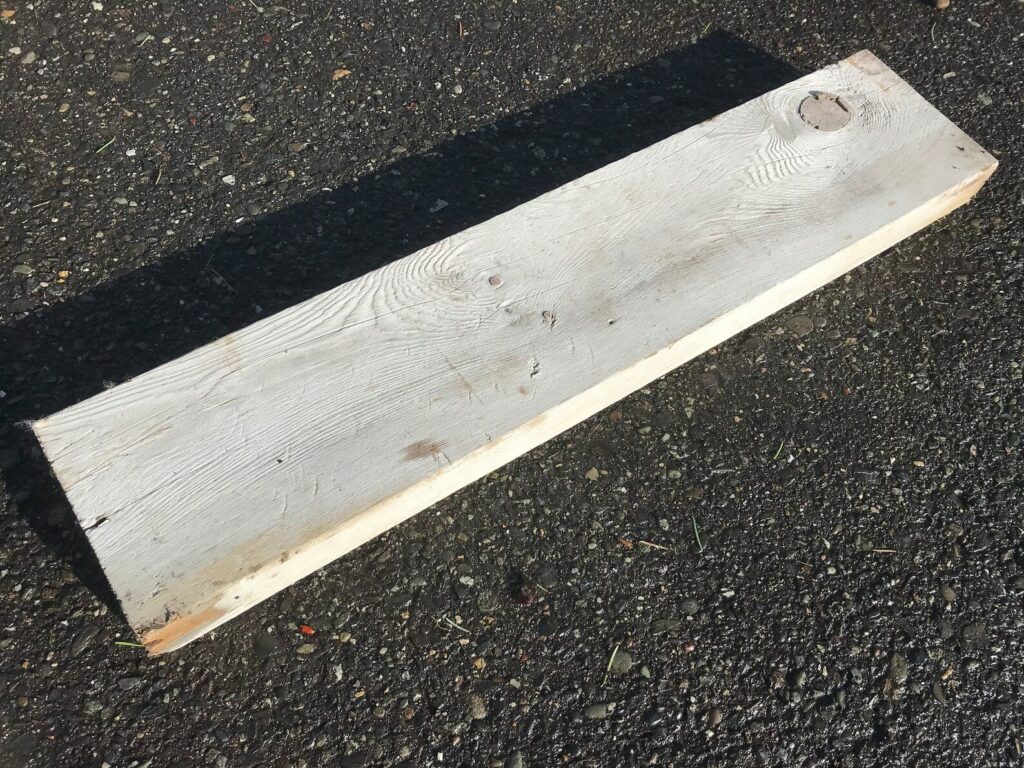
Random Blocks of Scrap Wood (can’t stress enough, even with levelers). They are cheap and easy and sometimes just the right size to adjust something. Grab a pair of 1×6, 2×6, and 2×8 pieces and a couple chunks of 4×4, as they were our go-to scraps when the levelers or other blocking needed some assistance.

A pair of water-proof shoes/boots – I ended up picking duck boots, but a slip-on rain boot or gardening croc or waterproof hiking boot would work just as well. It just depends whether you want something easier to slip on and off, or you want something with more structure and durability.
As an Amazon Associate, we earn from qualifying purchases. Many (but not all) of the links on embarkrv.com are affiliate links. This means that we may make a small commission on the sale of an item if you purchase through one of these links. The price of the item is the same for you whether it is an affiliate link or not, and using affiliate links helps us to maintain this website and bring you other great content. We have not been paid for our review of products. What we are recommending is based on our use and experiences while RVing.


